Imaging Japanese History:
Lesson Plans for High School

Imaging Japanese History is an online curriculum designed to enhance students' visual literacy skills, historical thinking skills, and knowledge of Japanese history. Five online modules each provide a case study in the role of art in capturing and conveying human experience.
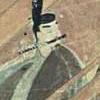
A Case Study of Heian Japan through Art: Japan's Four Great Emaki
Emakimono or emaki, narrative picture scrolls, developed into a distinctly Japanese art form in the Heian period, 794-1185 CE. In this lesson, students examine four emaki masterpieces to analyze the highly refined court culture, politics, and religion in the late Heian period. Working in groups, they then create preview posters for a museum exhibit featuring the four emaki, providing their interpretation of the facets of Heian culture they believe exhibit-goers should learn.
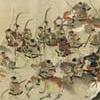
A Case Study of Medieval Japan through Art: Samurai Life in Medieval Japan
The samurai warrior has come to symbolize Japan’s medieval period of social and political unrest that lasted from the late twelfth to late sixteenth centuries. Working with artistic renderings of the samurai as well as cultural artifacts of samurai life, students recognize the complex, complementary aspects of the samurai culture that developed during this period. Students consider this more nuanced view of the samurai as they take on the role of advisors to a director hoping to make an authentic film about Medieval Japan.
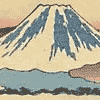
A Case Study of Tokugawa Japan through Art: Views of a Society in Transformation
For many years, Western scholarship presented a narrative of Tokugawa Japan as a stable, but also stagnant society. More recent scholarship identifies the Tokugawa period, 1603-1868, as a time when Japan experienced significant social, economic, and political changes that laid the groundwork for modernization. In this lesson, students consider a major art form of the period—woodblock prints—as historical documents providing a visual record of a society and country in transformation. They identify specific changes Japan underwent on its early path to becoming a modern nation.
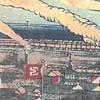
Becoming Modern: Early 20th Century Japan through Primary Sources
An expanded unit offers seven lessons that examine Japan’s modernization and international expansion from the 1880s through the 1920s, a time span overlapping the late Meiji, Taishō, and early Shōwa periods. The lessons draw upon a range of historical source materials—including art, literature, memoir, interviews, and government documents—to teach Japanese history using pedagogical approaches that address national content standards and Common Core skills.
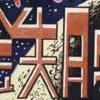
A Case Study of Late Twentieth-Century Japan through Art: Tezuka Osamu and Astro Boy
How can an artist, a particular piece of art, or an artistic genre represent a historical period? This question underlies the Imaging Japan project and provides the focus question for this lesson in the series. Students first identify the criteria they would use to choose a representative artist or art form to speak for another country and era. Students then analyze whether the choice of artist Tezuka Osamu and his anime creation, Astro Boy, to represent late twentieth-century (1945-present) successfully meets the criteria they generated. Through this process, they expand their knowledge about contemporary Japanese culture and develop their analytical skills, while becoming acquainted with a remarkable artist, his creations, and the messages they conveyed.
The modules address major content from the National Standards for World History and are designed to help students answer the following essential questions about Japan during particular time periods in its long history.
- What did it mean to be Japanese? How did art reflect and record the lives, thoughts, and conditions in which Japanese lived at certain moments in time?
- How can art be read to uncover Japanese cultural values, belief systems, social structures, and identities at particular times?
- How do Japanese arts reflect unity and diversity in Japanese society across periods of Japanese history?
Each module contains the following components.
- An introductory essay on the social history of the period, written by a leading scholar of that period. Introductory essays provide teachers with the background needed to understand the questions that historians have asked about this period and how understanding of the period has changed with new scholarship. Designed primarily as teacher background, the essays also may be assigned to students in lieu of the textbook treatment of the period.
- A two- to three-day lesson that engages students in “reading” artwork and visual materials as historical primary sources to better understand a historical period. Students will consider how the art reflects the period in which it was created—for example, how it incorporated aesthetics, cultural trends, foreign influences, religious ideals, and/or social trends. In essence, the art will serve as a “case study” of the period.
Imaging Japanese History curriculum developers and consultants:
- Lynn Parisi, Director
- Jen Spolnik, Project Associate and web designer
- Laurel Singleton, Editor and field test coordinator
Heian Japan:
- Ethan Segal, Michigan State University, Essayist
- Jaye Zola, Boulder Valley School District (retired), Curriculum developer
Medieval Japan:
- Ethan Segal, Michigan State University, Essayist
- Jaye Zola, Boulder Valley School District (retired), Curriculum developer
Tokugawa Japan:
- Marcia Yonemoto, University of Colorado, Essayist
- Sara Thompson, Boulder Valley School District, Curriculum developer
Meiji-Taisho Japan:
- Marcia Yonemoto, University of Colorado, Essayist
- Lynn Parisi, University of Colorado, Curriculum developer
Contemporary Japan:
- William Tsutsui, University of Kansas, Essayist
- Mary Hammond Bernson, University of Washington, Curriculum developer
Reviewers and field testers:
- Christine Guth, Royal College of Art and Victoria and Albert Museum, London
- Melanie King, Seattle Central Community College
- Anne Nishimura Morse, Boston Museum of Fine Arts
- Samuel Morse, Amherst College
- Stephen Snyder, Middlebury College
- Ethan Segal, Michigan State University
- Joan Brylski, Pulaski Community High School, WI
- Harvey Edwards, Selinsgove Area High School, PA
- Michal Lynch, Scattergood Friends School, IA
- Hillary Mills, Odyssey School, CA
- Claudia Milne, Harrison High School, NY
- Gordon Monaghan, Highland High School, NM
- Kathy Sabino, Hamilton Central School, NY
- Catherine Schyling, Peak to Peak Charter School, CO
- Linda St. Clair, Lakeside Middle School, WA
- Camille Tedeschi, Huntington High School, NY
Created © 2008: The Program for Teaching East Asia at the University of Colorado Center for Asian Studies gratefully acknowledges the support of the Japan Foundation Center for Global Partnership in the development of Imaging Japanese History.
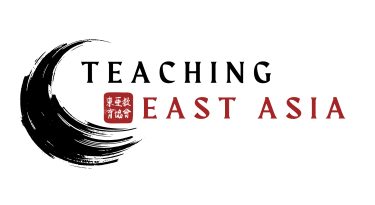
Imaging Japanese History
- A Case Study of Heian Japan through Art: Japan's Four Great Emaki
- A Case Study of Medieval Japan through Art: Samurai Life in Medieval Japan
- A Case Study of Tokugawa Japan through Art: Views of a Society in Transformation
- Becoming Modern: Early 20th Century Japan through Primary Sources
- A Case Study of Late Twentieth-Century Japan through Art: Tezuka Osamu and Astro Boy

